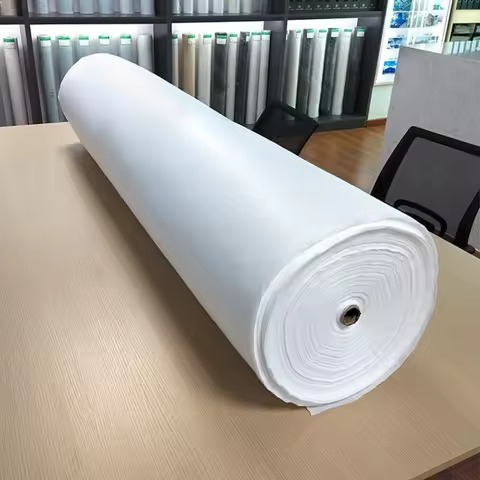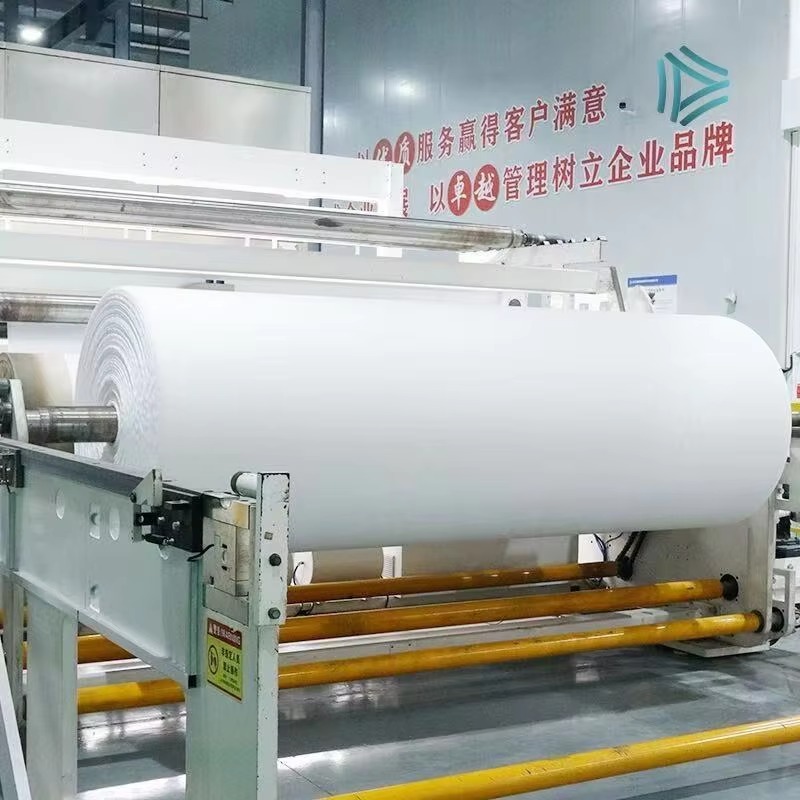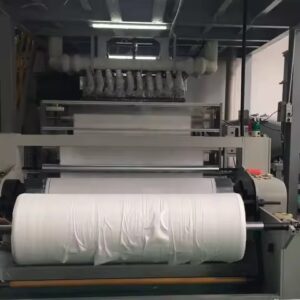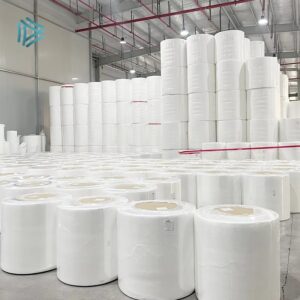Guidelines for Selection & Quality Control of Spunlace Nonwoven Fabrics
Introduction
As the demand for Spunlace Nonwoven Fabrics continues to rise across industries such as healthcare, hygiene, household cleaning, automotive, agriculture, and packaging, buyers are faced with a critical challenge: how to choose the right spunlace fabric and ensure consistent quality.
The market offers a wide variety of spunlace products, each with different raw materials, weights, finishes, and performance features. Without proper guidance, companies risk selecting fabrics that may underperform, lead to customer dissatisfaction, or fail regulatory requirements.
This article provides a comprehensive guide to evaluating, selecting, and ensuring the quality of spunlace nonwoven fabrics—helping manufacturers, distributors, and end-users make informed decisions that balance performance, sustainability, and cost-effectiveness.
1. Key Factors to Consider When Selecting Spunlace Fabrics
Choosing the right spunlace fabric depends on the specific application. Buyers should carefully evaluate the following parameters:
1.1 Fiber Composition
The raw materials used significantly influence performance and environmental impact.
Natural fibers (cotton, viscose, bamboo, wood pulp): Soft, absorbent, and biodegradable—ideal for hygiene and eco-friendly products.
Synthetic fibers (polyester, polypropylene, nylon): Strong, durable, and cost-effective—commonly used in industrial and automotive applications.
Blends (viscose/polyester, cotton/polypropylene): Combine the best qualities of both, offering a balance between softness and strength.
👉 Tip: For disposable wipes, prioritize natural or biodegradable fibers. For industrial cleaning, polyester blends may offer better durability.
If you’re new to the material, see our introduction to spunlace nonwoven fabrics for a quick overview
1.2 Fabric Weight (GSM)
Spunlace fabrics range from 25 to 120 grams per square meter (GSM). Weight affects strength, absorbency, and cost.
Lightweight (25–40 GSM): Best for wipes, tissues, and facial masks.
Medium-weight (50–80 GSM): Suitable for gowns, sanitary products, and cleaning cloths.
Heavy-duty (100–120 GSM): Ideal for industrial wipes, protective clothing, and automotive linings.
👉 Tip: Do not assume heavier is always better—choose based on the performance required, not just weight.
1.3 Fabric Structure & Texture
Different textures influence absorbency, aesthetics, and usability:
Plain/Flat: Smooth, uniform surface for general-purpose wipes and masks.
Embossed: Enhances strength and cleaning ability, commonly used in household wipes.
Apertured (perforated): Increases absorbency and breathability, often used in cosmetic pads and medical dressings.
👉 Tip: For cleaning oil or grease, embossed spunlace provides better scrubbing action.
1.4 Functional Finishes
Spunlace fabrics can be enhanced with specialized coatings:
Antibacterial/Antiviral Treatments – for medical and hygiene uses.
Hydrophobic (water-repellent) Finishes – for protective clothing.
Hydrophilic (superabsorbent) Treatments – for wound dressings and diapers.
Flame Retardants – for automotive and industrial textiles.
👉 Tip: Always verify whether finishes are skin-safe and certified, especially for products in contact with skin.
1.5 Sustainability Considerations
Sustainability is becoming a key selection factor. Buyers should ask:
Is the fabric biodegradable or recyclable?
Does the supplier use closed-loop water systems and renewable energy?
Are the fibers responsibly sourced (FSC-certified wood pulp, organic cotton)?
👉 Tip: Choose suppliers with ISO 14001, OEKO-TEX®, or GRS certifications to ensure environmental compliance.
Emerging materials and finishes are shaping the future trends of spunlace nonwovens.
2. Quality Control in Spunlace Production
Ensuring consistent quality requires strict testing and certification throughout the production process.
2.1 Physical & Mechanical Testing
Tensile Strength (Dry & Wet): Ensures durability and resistance to tearing.
Elongation & Dimensional Stability: Prevents distortion under stress.
Absorbency Rate & Capacity: Measures how quickly and how much liquid fabric can hold.
Thickness & Weight Uniformity: Confirms even fiber distribution.
2.2 Hygiene & Safety Testing
Microbial Testing: Ensures fabric is sterile or low in bioburden.
Cytotoxicity Testing: Verifies fabric safety for skin contact.
Allergen & Irritant Testing: Particularly important for baby wipes, diapers, and cosmetics.
2.3 Environmental Testing
Biodegradability Assessment: Measures decomposition under composting or soil conditions.
Chemical Residue Testing: Ensures no harmful substances remain.
Life Cycle Analysis (LCA): Evaluates total environmental footprint.
3. Certifications & Standards to Look For
To ensure reliability and compliance, buyers should prioritize spunlace fabrics certified by international standards:
ISO 9001 – Quality management systems.
ISO 14001 – Environmental management.
OEKO-TEX® Standard 100 – Tested for harmful substances.
FSC® Certification – Responsible sourcing of cellulose-based fibers.
CE & FDA Approvals – Required for medical-grade products.
EN 13795 – European standard for surgical gowns and drapes.
👉 Tip: Certifications not only guarantee quality but also enhance market credibility for finished products.
4. Cost vs. Performance Balance
While quality is paramount, cost efficiency cannot be ignored. Buyers should evaluate:
Total Cost of Ownership (TCO): Consider durability, reusability, and waste management.
Performance-to-Cost Ratio: A slightly more expensive fabric may reduce failures, improving long-term savings.
Bulk Supply Agreements: Secure better pricing and consistent quality through long-term contracts.
👉 Tip: Avoid selecting the cheapest option—low-quality spunlace may fail under stress, leading to product recalls or customer complaints.
5. Supplier Selection & Partnerships
Choosing the right supplier is as critical as choosing the fabric itself. Look for:
Proven Track Record: Years of experience in spunlace manufacturing.
R&D Capabilities: Ability to develop customized fabrics for your application.
Sustainability Initiatives: Commitment to green manufacturing practices.
Technical Support: Assistance in product testing, certification, and optimization.
Global Logistics Capability: Reliable supply chain management.
Strong supplier partnerships can reduce risks, ensure consistent quality, and open the door to innovative fabric solutions.
6. Future Considerations for Buyers
As the spunlace industry evolves, buyers must stay informed about emerging trends that could affect product selection:
Shift toward Biodegradable & Compostable Wipes – driven by plastic bans.
Integration of Smart Textiles – spunlace with embedded sensors or antimicrobial nanoparticles.
Digital Printing & Branding – customized spunlace products for packaging and cosmetics.
Regulatory Changes – stricter laws on single-use plastics and medical disposables.
By anticipating these shifts, buyers can future-proof their sourcing strategies and stay ahead of competitors.
Conclusion
Selecting and ensuring the quality of Spunlace Nonwoven Fabrics requires a careful balance of fiber composition, weight, texture, functionality, sustainability, and cost. Buyers must also rely on testing, certifications, and supplier partnerships to guarantee performance and compliance with global standards.
In today’s competitive and environmentally conscious market, investing in high-quality spunlace fabrics is not just a purchasing decision—it’s a strategic move that impacts brand reputation, customer satisfaction, and long-term sustainability goals.
By following these guidelines, companies can confidently choose spunlace nonwoven fabrics that deliver the optimal blend of performance, safety, and eco-friendliness for their industry.
To understand how these choices affect the market, check our global spunlace market outlook






